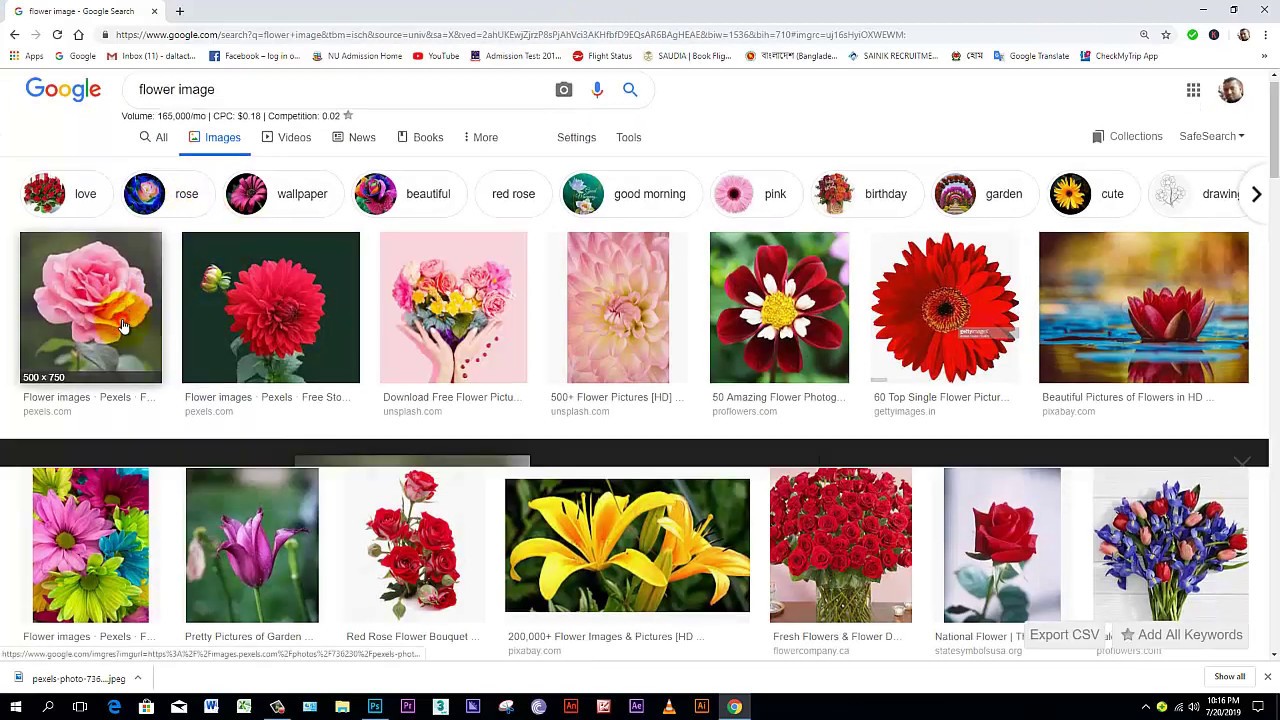Have you ever stumbled upon that perfect stock photo only to find it’s watermarked with Getty Images? It can be frustrating when you want to use an image but feel restricted by copyright laws. In this post, we’ll explore how to remove Getty Images from your photos while still respecting the copyrights intact. You'll learn the nuances of copyright, understand what’s permissible, and discover some practical steps for doing it the right way.
Understanding Copyright Issues with Getty Images

When it comes to using images from Getty, copyright can feel like a labyrinth. Getty Images, a leading stock photo agency, holds the copyright to millions of images, which means that using them without permission could land you in hot water. Let’s simplify the crucial aspects you need to know:
- What is Copyright? Copyright is a legal concept that grants the creator of original works exclusive rights to their use and distribution, typically for a specified time period. This means the photographer or artist has sole control over how their work is used.
- Getty’s Licensing Model: Getty Images operates on a licensing model, meaning you must pay a fee or abide by specific terms to use their images. There are two main types of licenses:
- Royalty-Free (RF): You pay once and can use the image multiple times, but certain restrictions might still apply.
- Rights Managed (RM): This is more exclusive, where usage is determined by specific criteria, often making it more expensive.
- Consequences of Copyright Infringement: Using a Getty image without proper licensing can lead to legal issues, including hefty fines. If you’re caught, you might face a cease-and-desist letter or even a lawsuit.
- Fair Use Doctrine: While using images without permission is generally a no-go, the Fair Use doctrine provides some wiggle room. However, it’s essential to understand that Fair Use is incredibly subjective and not a guaranteed shield against legal actions.
Knowing these key concepts will lay a solid foundation as you navigate the world of copyrights and images. Stay with us as we dive deeper into how you can handle Getty images responsibly while still achieving your creative vision!
Also Read This: How to Get on Elevator YouTube and Grow Your Channel’s Subscriber Base
3. Methods for Removing Watermarks or Copyright Notices

Watermarks and copyright notices can be quite the hassle when you're trying to use images for your projects. While you might be tempted to remove them for a cleaner look, it's essential to tread cautiously as doing so can infringe on copyright laws. However, if you're simply looking to understand the methods that are often found in discussions about watermark removal, here they are:
- Photo Editing Software: Programs like Adobe Photoshop or GIMP allow for advanced editing. You can use the healing brush or clone stamp tools to carefully paint over the watermark. Keep in mind, this takes some skill and practice.
- Mobile Apps: There are numerous apps available on iOS and Android that claim to remove watermarks with a few taps. Apps like "Remove Unwanted Object" or "TouchRetouch" can sometimes do a decent job, but results can vary.
- Online Services: Websites like Inpaint or Watermark Remover allow you to upload an image and use their automated services to remove watermarks. While convenient, always ensure you have the right to use the image.
- Blur or Crop: If the watermark doesn’t occupy a critical part of the image, simply cropping it out or using a blurring effect around the watermark can work, although it might change the original aspect of the photo.
Regardless of the method, always remember that removing watermarks does not transfer copyright ownership. If you want to utilize an image legally, it's best to explore other options as well.
Also Read This: Why Is Steve Banned from YouTube
4. Legal Alternatives to Editing Getty Images

If you love the imagery provided by Getty but want to avoid the hassle of editing or potential copyright infringements, there are plenty of legal avenues you can explore. Here are some excellent alternatives:
- Creative Commons Licenses: Websites like Flickr and Wikimedia Commons offer images under Creative Commons licenses, allowing you to use them freely under specific conditions. Make sure to check the type of license as it varies.
- Stock Photo Websites: Sites like Unsplash, Pexels, and Pixabay offer high-quality images for free. They generally require attribution but are usually more lenient than Getty.
- Purchase a License: You can buy a license directly from Getty or other similar sites. This way, you gain the legal right to use the image as you see fit without the watermark.
- Create Your Own Content: If you have the talent or resources, creating your own images can be the best way to own the content you use. Plus, it gives you unique visuals tailored to your needs.
By exploring these alternatives, you can use stunning visuals in your projects without running afoul of copyright laws. Always keep in mind the creator's rights, and opt for methods that respect the intellectual property of others!
Also Read This: Here is How to Deactivate Flickr Account in Less Than a Minute
5. Best Practices for Protecting Your Own Images
When you’re creating beautiful photos, it’s crucial to protect your hard work. Here are some best practices that can help you safeguard your images while still allowing them to be shared and appreciated:
- Watermark Your Images: One of the simplest ways to protect your work is by adding a watermark. This can be your name, logo, or any unique identifier that makes it clear the image belongs to you. While watermarks can be a bit intrusive, they’re effective in discouraging unauthorized use.
- Use Metadata: Embedding metadata into your photos is a smart move. This data can include your name, copyright information, and contact details. Most image editing software allows you to do this easily, and it’s a good way to prove ownership if disputes arise.
- Publish on Personal Platforms: Sharing your images on your own website or social media channels gives you better control over how they’re used. Consider platforms like your personal blog, Instagram, or even dedicated photography sites where licensing options are clearly stated.
- Consider Licensing Options: If you’re open to sharing your images, think about using licenses like Creative Commons. These allow you to define how others can use your work while retaining your copyright.
- Monitor Usage: Keeping an eye on where your images appear online is essential. Tools like Google Reverse Image Search can help you track unauthorized uses, allowing you to take action when needed.
By implementing these strategies, you can safeguard your creative efforts while still sharing your photography with the world.
6. Conclusion
Removing Getty Images from your photos while retaining copyright can feel daunting, but with the right approach, it's entirely feasible. Always remember that while it’s essential to protect your own creative work, showing respect towards others' copyrights is equally important.
To recap:
- Understand copyright laws and the implications of using images from services like Getty.
- Consider alternative methods for obtaining images, such as negotiating licenses directly or finding free resources.
- Follow best practices for your photography to ensure your work isn’t misused.
In the digital world, remaining vigilant and proactive about image protection is necessary. With these tips in your back pocket, you can confidently navigate the complexities of copyright and image usage. So grab your camera, create more stunning photos, and know that you’re equipped to protect your artistic vision!
 admin
admin








